After countless restarts in ENDLESS Legend, I’ve finally forged an empire that feels promising. My Wild Walkers have grown from a single fledgling city to a thriving kingdom of five regions—and for once, I believe I can see this game through to the end.
I have expanded to have a few cities, have a semi-decent army that’s winning fights, and a collection of heroes to rule the kingdom. My empire spans 5 cities overall, and is constantly patrolled by a Wild Walker hero, Tlato Masi Pakwa II, and his small entourage. Most of the minor factions along the borders of the empire have been pacified thanks to the military might of this army.
I haven’t finished the game yet – games of ENDLESS Legend take a while to complete. But I have managed to overcome my Restartitis, and am committed to finishing my current game.
Violence
In my first few games, I would try to pacify minor factions through peace. I’d visit their towns and do their quests. This would get overwhelming, and I’d be juggling multiple quests, many of which I wouldn’t be able to complete fast enough. As a result, they would spawn more roaming armies, and I’d end up having to defend my faction against foes that were growing ever stronger.
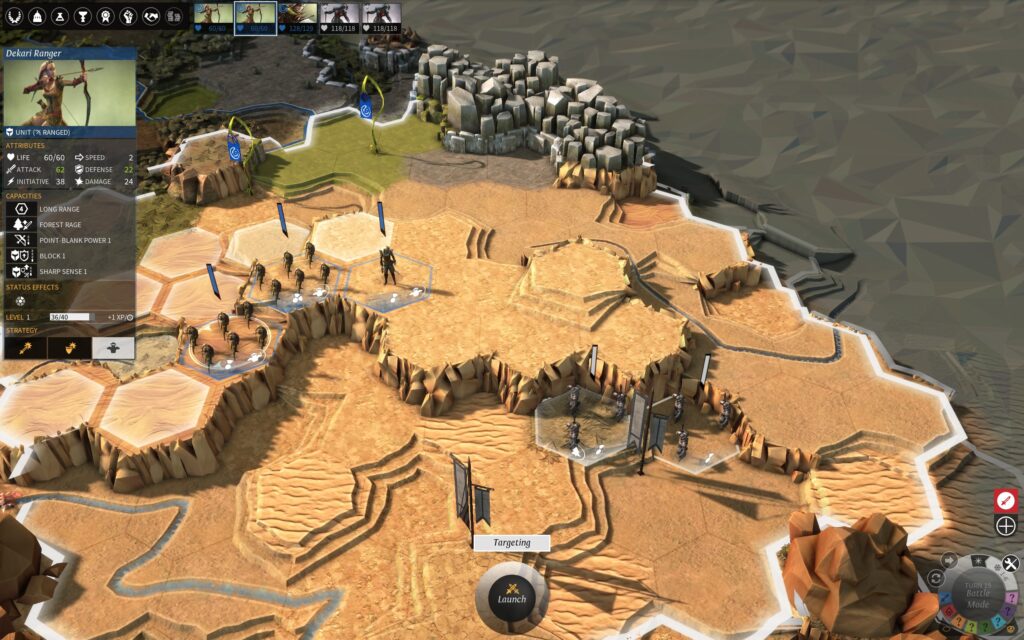
The solution, as it turns out, goes against my instincts for a peaceful resolution: don’t be afraid to resort to violence. In my current run I’ve started attacking and destroying minor factions’ cities, and it’s making the game a lot easier. As much as I’d like to play a more peaceful campaign, the Wild Walkers faction I’m playing with right now don’t seem geared toward that goal. So I now carefully manage and upgrade my armies, ensuring that I can defend my borders and keep them safe from invaders.
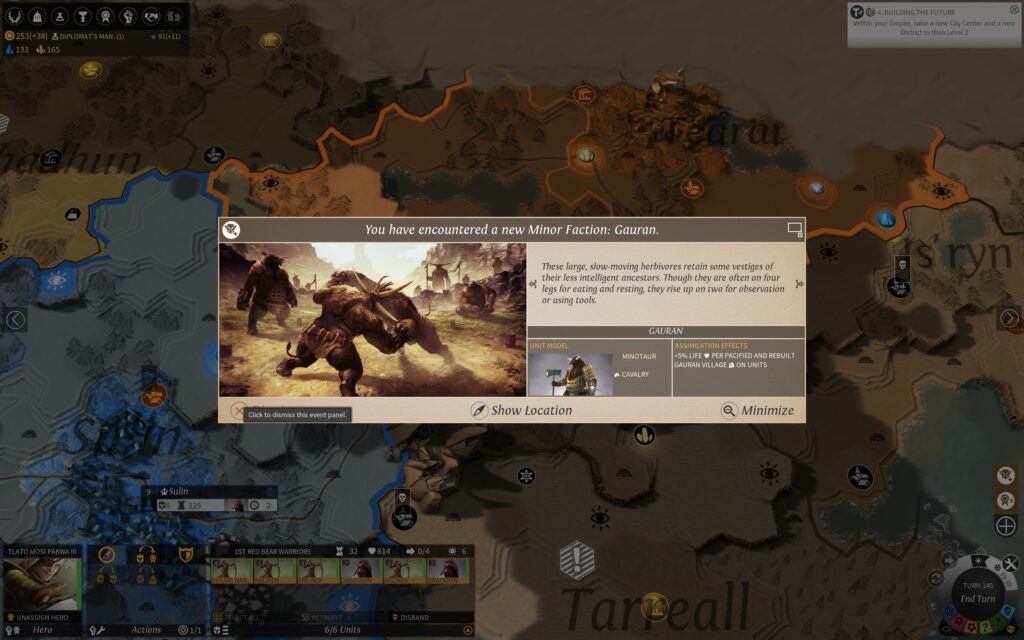
There is a downside. If you assimilate the minor faction after destroying their towns, you then have to rebuild these towns to gain their benefits. Completing quests doesn’t destroy the towns, so there would be no need to rebuild the towns if you do it this way.
Accepting aggression as a necessary tool changed everything. No longer overwhelmed by endless quests or restless armies, I learned to strike first and claim peace through conquest. But each decision to raze a minor faction’s village comes with a cost—ash on the ground where alliances might have grown. Still, the Wild Walkers are thriving, and for now, my kingdom feels secure.
Research Era
After you research a number of technologies you will unlock a new Research Era. Each era unlocks new research projects, new resources, new weapons, and some bonuses to new units.
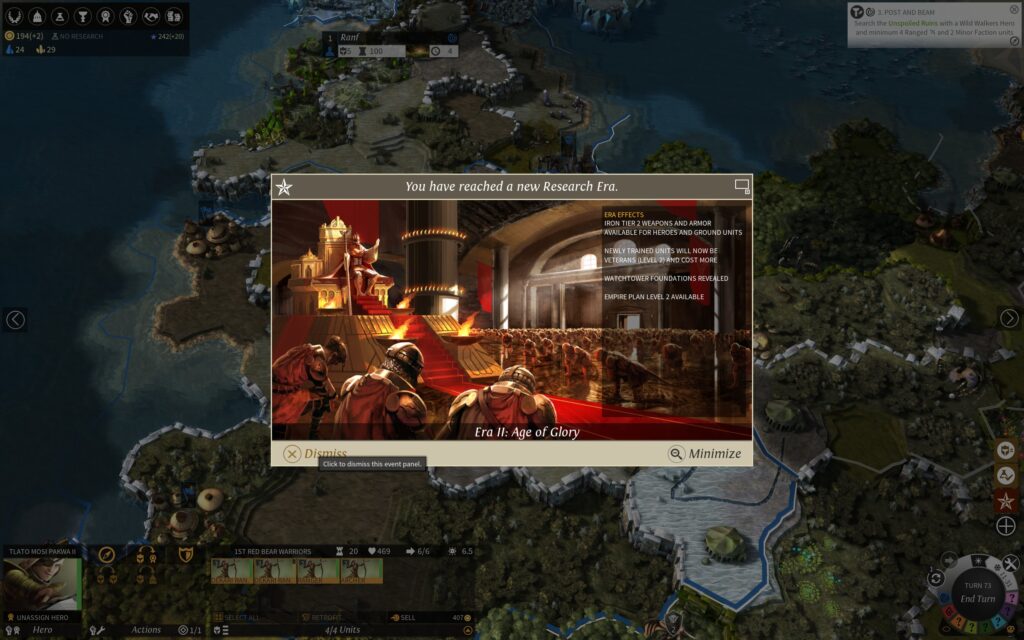
These eras have opened up new research possibilities and revealed new mechanics. I now have watch towers dotted around the map, places where my armies can rest and heal. New resources are available, unlocking new bonuses and weapons. And one new feature that has proved very beneficial is the introduction of trade routes.
Trade Routes
When I advanced to Research Era II: Age of Glory I found that I could research Imperial Highways. This was a turning point in the game, allowing my cities to build the Right of Way city improvement. This enabled cities to automatically create roads between them. It also allowed cities to create trade routes, each one will generating dust and science, depending on the length of said trade route.
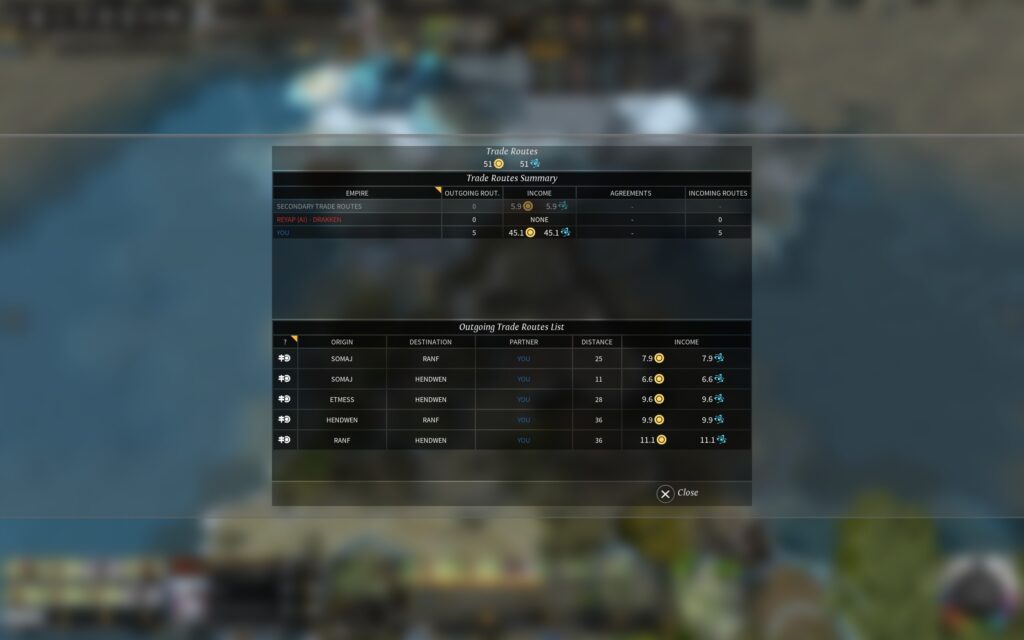
After this I was less dependent on citizens to generate dust and science, freeing them up for more food or industry production. With more dust coming in I was able to support more troops, more heroes, and even more city improvements. It was at this point I knew I could expand faster, as each new city would create a new trade route.
New Cities
Founding new cities is the way to expand. In this game, the map is divided up into territories. Inside each territory there can be one city belonging to a major faction. They are also each home to one minor faction. If you build a city within the territory, you now own that territory, and can assimilate the minor faction. The faction still has to be pacified first, either by completing a quest, or through violence.
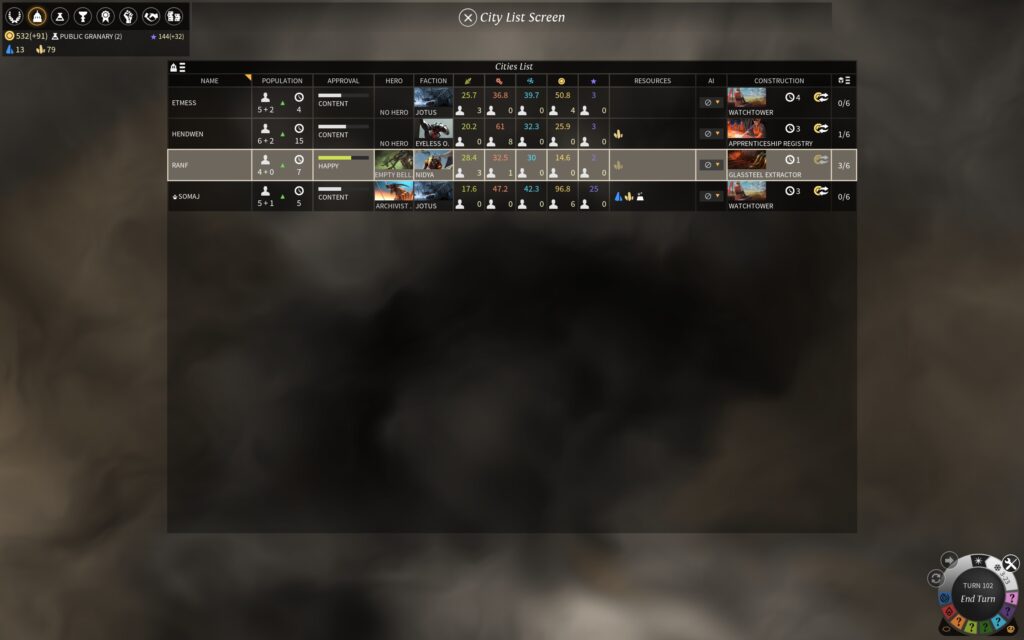
You have to be careful you don’t expand too fast. Citizens will become unhappy if you grow too fast, and this affects how many resources each city generates. In later eras you’ll be able to research technologies that will reduce these penalties, making it more worthwhile to expand your faction across new territories.
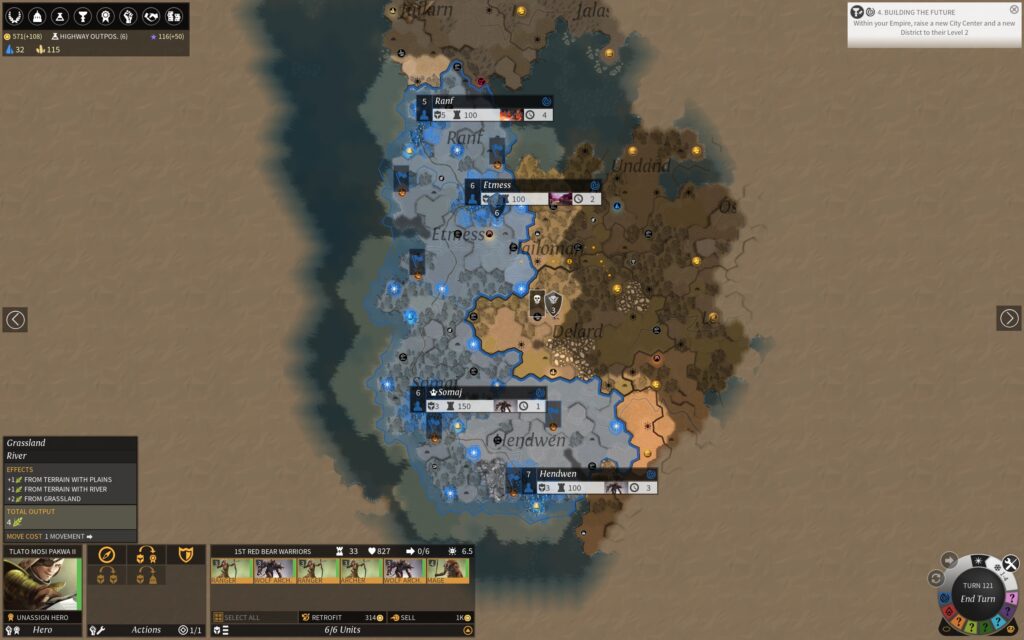
Empire Plan
Every 20 turns you get to manage your empire plan. Essentially the plan you pick gives you bonuses in one of four areas: Military, Economy and Population, Science and Industry, and Empire and Expansion. Depending on your focus for the next few turns, you can select different bonuses. For example, if you want to start taking over cities with your army, you might focus on Military plans.
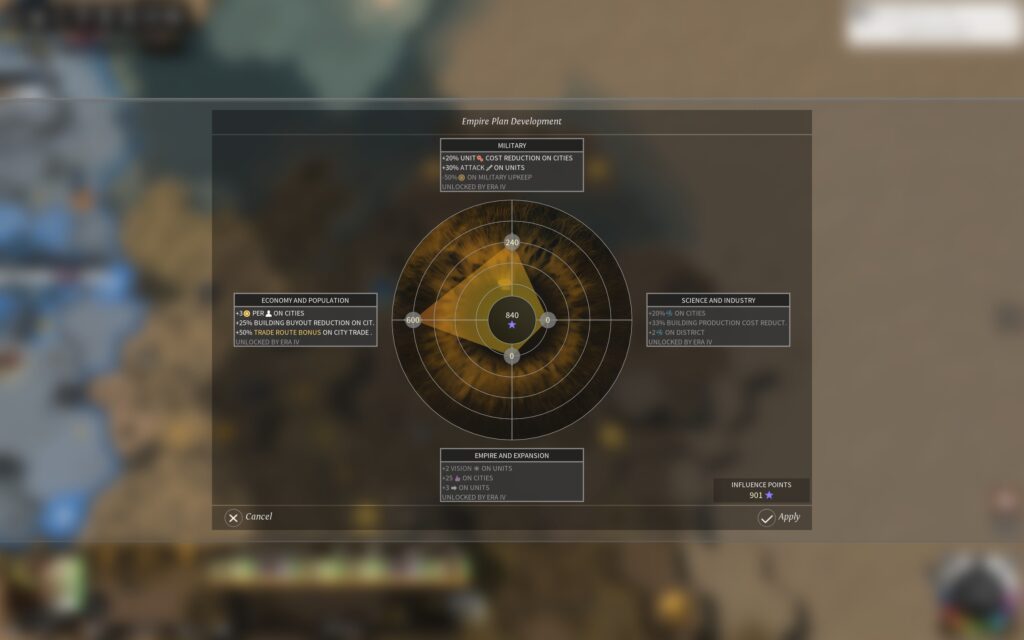
The bonuses available depend on your Research Era, and they cost a number of Influence based on the number of cities you have. This can be another reason to slow expansion, allowing you to get more bonuses at a lower cost.
Marketplace
The marketplace is probably one of the most important mechanics in the game. Here you can recruit mercenaries and heroes, as well as trade goods and resources. The main function early on is to buy new heroes. Heroes can be assigned to cities, and with the right upgrades they can provide benefits to a city’s production and defenses. It’s wise to get heroes early, as they will slowly level up and you can buy more upgrades that will provide even more benefits to your cities.

Automation
Micromanaging a city’s resource production makes sense early on in the game when you have only one or two cities. But there will be a point where this becomes too much work. Thankfully, it’s possible to automate the population distribution of each city by selecting the resource you want it to focus on. Younger cities can focus on industry or food so they can get themselves built quicker, whereas older cities might focus on dust or science so that your faction can advance through the Research Eras quicker.
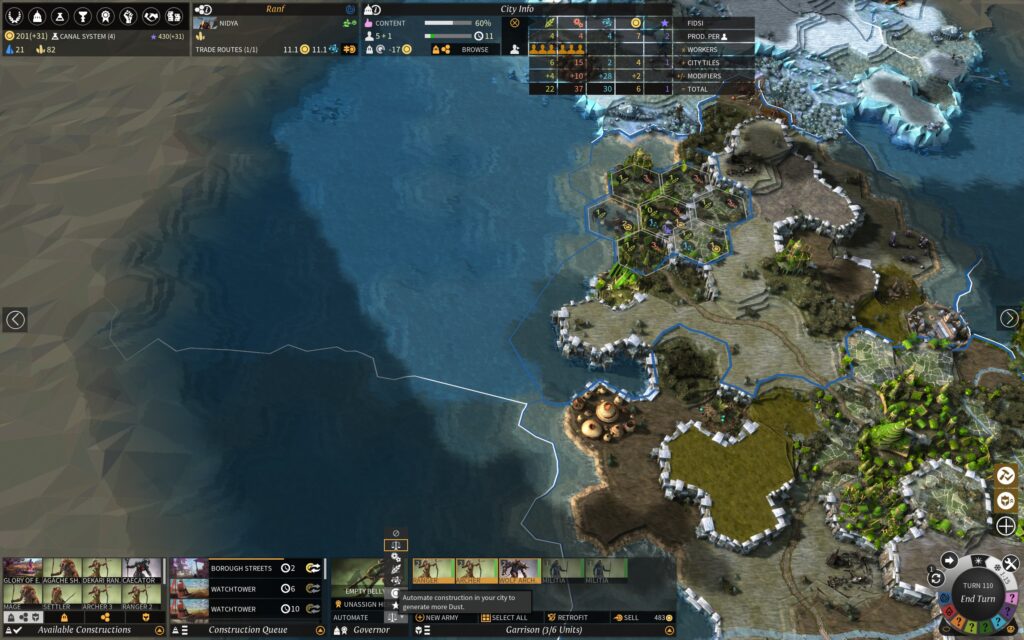
Of course, the option to micromanage is still there if you need it, but it’s handy to not have to think too much about a city for a while, allowing you to focus on other areas of the game.
District Levels
You can level up your districts and city centers by surrounding them with at least 4 other districts. I haven’t levelled up a district or city yet, but I suspect that it will give bonuses to a city’s production of resources. It also happens to be the next Story Quest for my faction, so my main goal right now is levelling up at least one city center and one district.
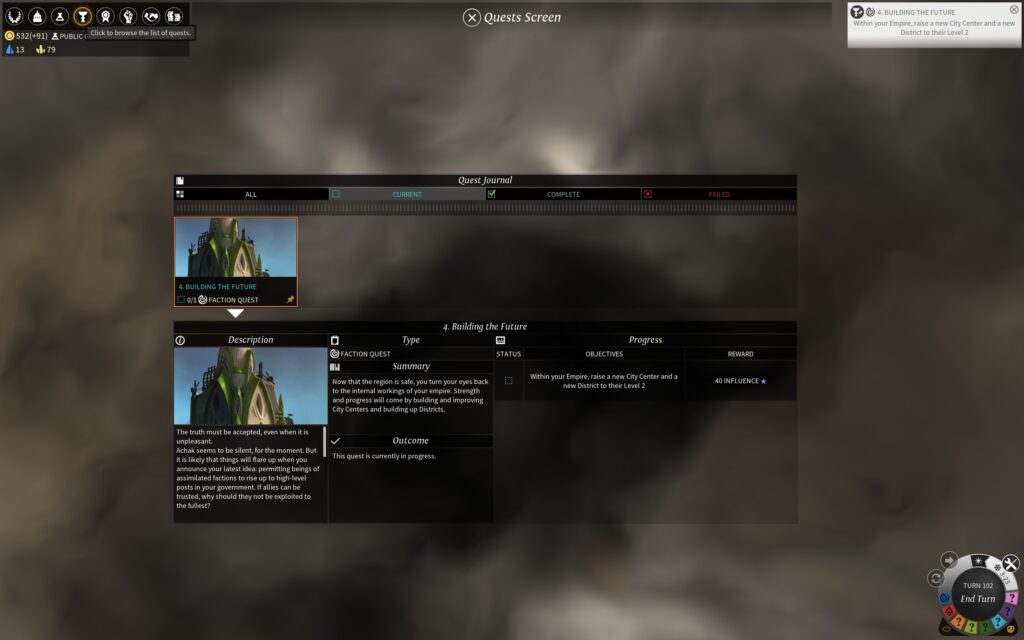
Slowly I’ve been improving my gameplay. I now have a faction with six cities in six regions, and have advanced to Research Era III: Age of Enlightenment. I have only come into contact with one other major faction, but so far our interactions have been minimal. As I progress through the game and build a stronger empire, I’m curious to see how these interactions will go.
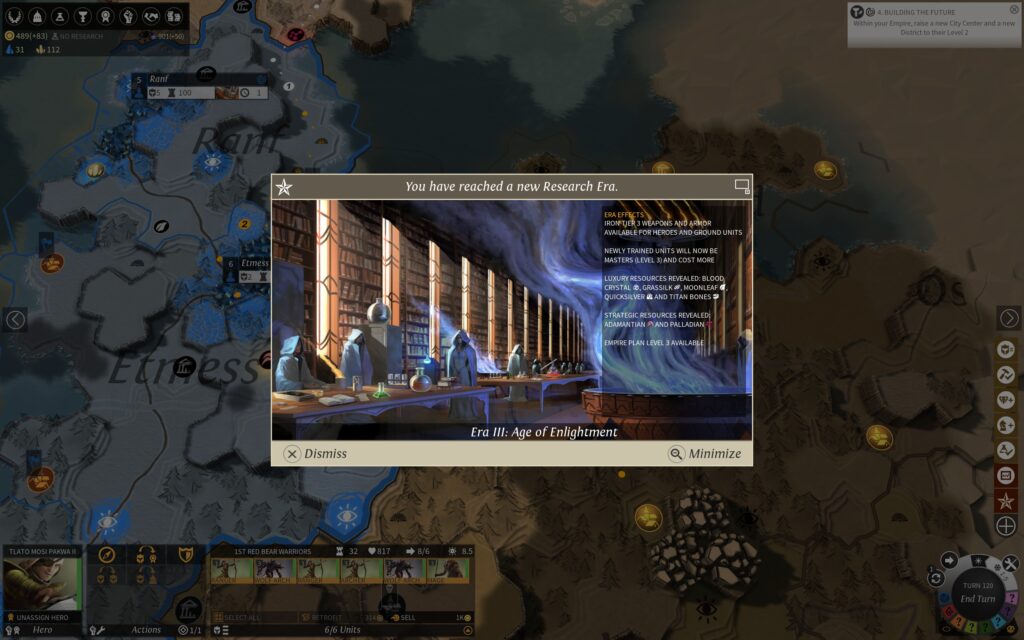
Soon, I’ll face the test of diplomacy—or steel. My Wild Walkers are strong, but the Age of Enlightenment brings new challenges: rival factions stirring in distant lands, and the ever-present question of whether my ambition will outpace my empire’s stability. Will I unite the world or crumble beneath its demands? Only time will tell.




